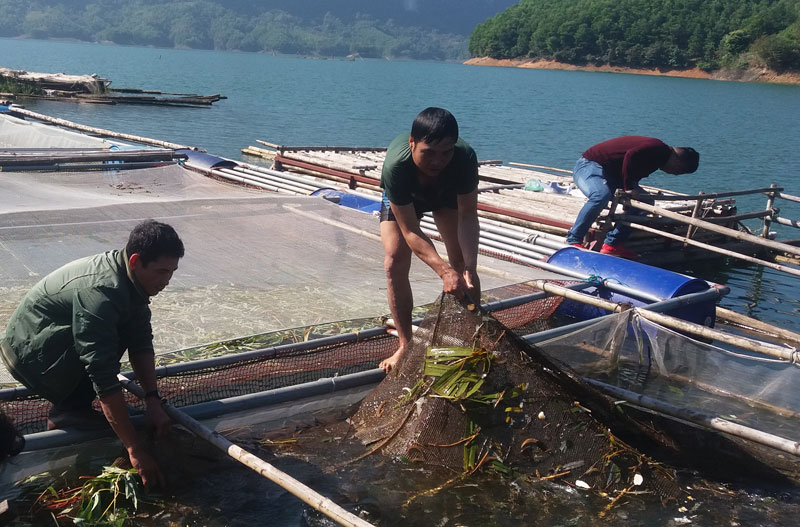
(HBO) – Hoa Binh produced around 950 tonnes of fish in February, including 130 tonnes from fishing and 830 tonnes from farming.
The province currently has about 2,700 hectares of ponds and
lakes for fish farming as well as 4,600 fish cages, 43 aquatic farms and
cooperatives. All districts and communes have been taking all steps, from
managing the water environment, raising fries, harvesting fish and preparing
ponds and lakes for the next crop.
The province’s fish output is estimated to exceed 2,600
tonnes in the first quarter of this year, including 375 tonnes from fishing and
about 2,250 from farming. About 6 million fries have also been raised to meet
demand of local farmers.
Hoa Binh will strengthen inspection to protect local aquatic
resources, particularly in Hoa Binh Reservoir and prevent destructive fishing
practices, such as blast fishing and cyanide fishing./.
According to data from the Hoa Binh Provincial Party Committee, the industrial production index for the first six months of 2025 is estimated to have increased by 20% compared to the same period last year. This marks the highest year-on-year growth rate for this period since 2020.
In the first six months of 2025, Hoa Binh province’s export turnover was estimated at 1.145 billion USD, marking an 18.11% increase compared to the same period in 2024. Import turnover was estimated at $ 804 million, a 17.15% increase, which helped the province maintain a positive trade balance.
The lives of the ethnic minority farmers in Tan Lac district have gradually improved thanks to the new directions in agricultural production. This is a testament to the collective strength fostered through the professional associations and groups implemented by various levels of the district’s Farmers’ Union.
With the motto the "product quality comes first,” after nearly one year of establishment and operation, Muong village’s Clean Food Agricultural and Commercial Cooperative, located in Cau Hamlet, Hung Son Commune (Kim Boi district), has launched reputable, high-quality agricultural products to the market that are well-received by consumers. The products such as Muong village’s pork sausage, salt-cured chicken, and salt-cured pork hocks have gradually carved out a place in the market and they are on the path to obtaining the OCOP certification.
In the past, the phrase "bumper harvest, rock-bottom prices" was a familiar refrain for Vietnamese farmers engaged in fragmented, small-scale agriculture. But today, a new spirit is emerging across rural areas of Hoa Binh province - one of collaboration, organisation, and collective economic models that provide a stable foundation for production.
Maintaining growing area codes and packing facility codes in accordance with regulations is a mandatory requirement for agricultural products to be eligible for export. Recently, the Department of Agriculture and Environment of Hoa Binh province has intensified technical supervision of designated farming areas and packing facilities to safeguard the "green passport" that enables its products to access international markets.


